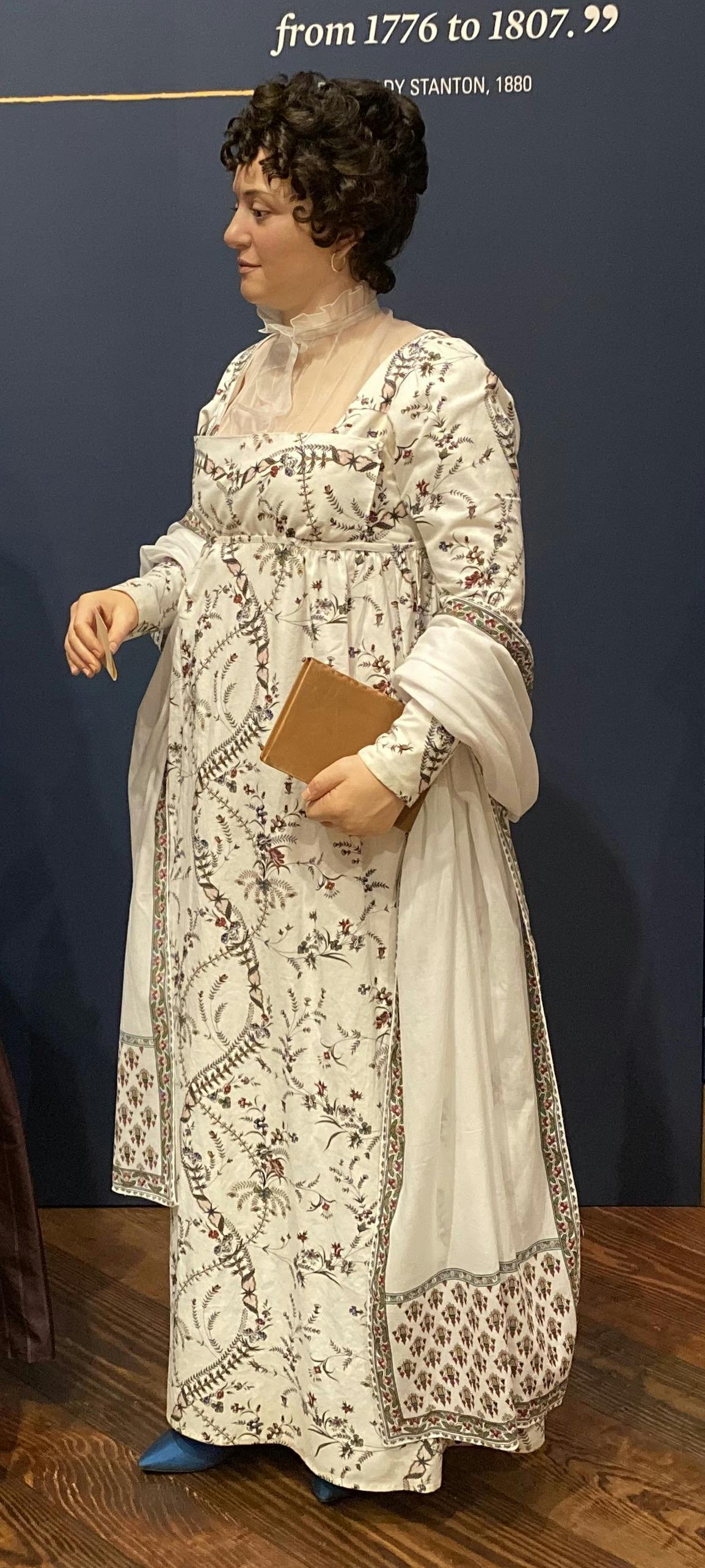
A “Wollstonecraftian”
This woman is waiting in line to cast her ballot.
She represents a younger generation of women whom critics labeled as “Wollstonecraftians” in newspapers of the time. The term makes reference to Mary Wollstonecraft, an English feminist associated with revolutionary ideas. Many Americans associated these new ideas with the rising popularity of the neoclassical, or “antique” style of dress. This woman wears a neoclassical gown. It did not require a petticoat to be worn underneath it, making the gown appear more modern than those of the mid-1700s.
This voter holds in her hand a copy of Wollstonecraft’s A Vindication of the Rights of Woman, reflecting the opposite danger that papers attributed to women voters from those of “petticoat electors'' — that women were more radical than men.
A total of 343 voters cast their ballots in the state election held in Montgomery Township in October 1801. At least 46 of those voters were women, including four women of the VanDike family: Rebecca, Catherine, Ann, and Sarah. The latter three were daughters of an “infamous” Loyalist who fought for George III during the Revolutionary War. Rebecca was the name of both John’s wife and another daughter. Due to the amount of property she controlled, it seems quite possible that Rebecca (the mother of Catherine, Ann, and Sarah) voted in 1801 along with her three daughters. This figure in the tableau depicts a woman about the same age as the daughters of John and Rebecca VanDike — Catherine, Ann, Rebecca, and Sarah — who were all single, in their 30s, and seemingly eligible to vote in 1801. Records show that the VanDikes were also slaveowners. Learn more about the VanDike women.
Photograph by Museum of the American Revolution